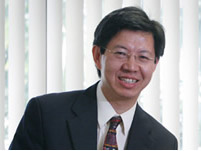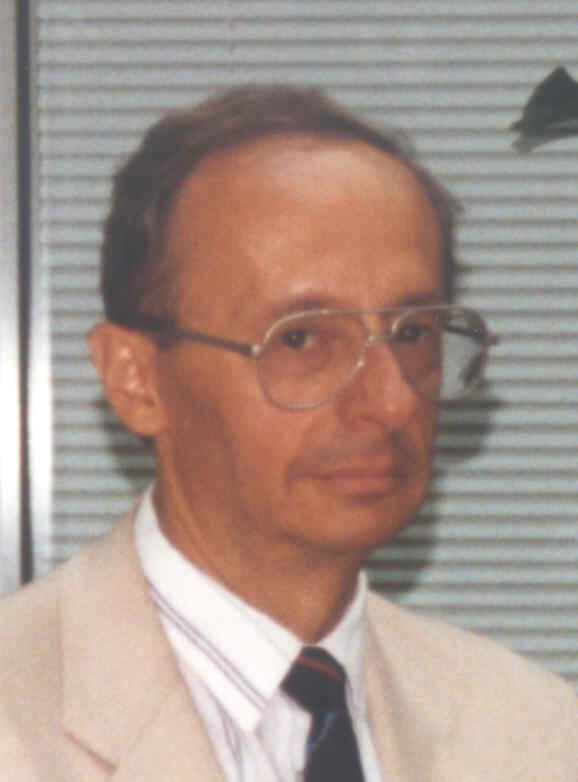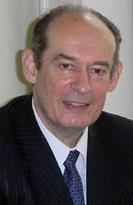Conference Keynote Speakers |
The Landscape and Grand Challenges of Scientific Computing Speaker: Prof. Matthew He
Abstract. In recent scientific and technological advances, physical and biological, ecological and environmental, social and behavioral, cognitive sciences, engineering, and other emerging sciences, engineering and information technologies share a common need for efficient algorithms, system software, information systems and architecture, and efficient computing solutions to address large computational and interdisciplinary problems. Many boundaries among science, engineering and social systems are cross-linked in the face of combinations of knowledge and tools as demonstrated in the areas of computational mathematics, scientific computing, network computing, cloud computing, bio-molecular computing, quantum computing, soft computing, most recently perceptual computing. It is the time when the physical, biological and social sciences are joining forces with information computing sciences. It is the time when we will make extraordinary advances in the history of mankind through the field of scientific computing. This talk covers the key elements of computing foundation, current development and landscape of computing, and grand challenges in scientific computing research and its applications. Biography Matthew He, Ph.D., is Full Professor and Assistant Dean of the Halmos College of Natural Sciences and Oceanography of Nova Southeastern University, Florida, USA. He is Full Professor and Grand Ph.D. from the World Information Distributed University since 2004. He has been awarded as an Academician of European Academy of Informatization since 2004. He received the World Academy of Sciences Achievement Awards in recognition of his research contributions in the field of computing in 2003 and 2010. Dr. Matthew He has been selected as one of 65 outstanding overseas Chinese in Chinese stamp book collection as part of nation’s 65th anniversary celebration in 2014. Dr. Matthew He has authored/edited 10 books/proceedings and published over 100 research papers in the areas of mathematics, bioinformatics, computer vision, information theory, mathematics and engineering techniques in medical and biological sciences. He is an editor of International Journal of Software Science and Computational Intelligence, International Journal of Cognitive Informatics and Natural Intelligence, International Journal of Biological Systems, and International Journal of Integrative Biology. He is an invited series editor of Biomedical and Life Sciences of Henry Stewart Talk “Using Bioinformatics in Exploration in Genetic Diversity”. He is a Chairman of International Society of Symmetry in Bioinformatics and a member of International Advisory Board of "International Symmetry Association (ISA). He is also an Editor-in-Chief of International Journal of Information Technology and Computer Science. He is a member of American Mathematical Society (AMS), Association of Computing Machinery (ACM), IEEE Computer Society, World Association of Science Engineering (WASE), and International Advisory Board member of Bioinformatics Group of International Federation for Information Processing (IFIP).
Symmetry lectures for students in information science (Case study for interdisciplinary training) Speaker: Prof. György Darvas
Abstract. I gained experience in information science students’ training since I have been reading lectures for more than two decades at the Faculty of Informatics, Eötvös University Budapest (sometimes at other universities abroad). I have chosen a phenomenon (namely symmetry) that is present in all scientific disciplines and in almost all branches of the arts. Discussing the appearances of this phenomenon, class of properties, concept in all of them, I demonstrate on its example how facilitates such a common phenomenon bridging the concerned disciplines, borrowing ideas, methods, regularities, similitudes, etc. from one field of learning to another. My course demonstrates for the students the advantages of interdisciplinary thinking; teaches them to apply phenomena, properties, concepts in another environment, being it either another discipline, field of creative intellectual activity, or another culture. It helps to shape the students’ holistic view of the nature, approaches to understand the world, the ways of thinking and perceiving, creativity and its products, the human culture. Symmetry is an appropriate bridging concept because certain basic forms of symmetry, like repetition, rotation, similitude (and also combined symmetries) facilitate algorithmic thinking that develop the programming abilities of the students. Algorithmic thinking appears not only in mathematical programming, but also in many fields of application, including, among others, mechanical and electric engineering, computer software development, in image processing, and of course in such fields like bioinformatics, algebra of the genetic code, applications to acoustic harmony (like music), as well as device development, and so on. Algorithmic approach assists also the interpretation of information processing by the two, antisymmetrically functioning human cerebral hemispheres, and the iteration process of successive information exchange between the two hemispheres. The process may serve as pattern of signal processing in technology as well. Identifying the algorithms in the human perception helps to understand analogies in automation processes and the building of structures in self-organising systems. In short, the symmetry course can be effectively used by the targeted groups of students. The paper will give a short presentation of the subjects, methods and possible pragmatic utilisation of the course. Biography György Darvas (1948) PhD, took his degrees in theoretical physics (1971) and in philosophy of science (1974) at the Eötvös Loránd University, Budapest. His research concentrates on symmetries in the sciences, technology and arts, and interdisciplinary bridges between disciplines promoted by the concept and phenomenon of symmetry. He has been working as a senior research fellow for the Hungarian Academy of Sciences (1971-2012). He is the director of the nonprofit institute Symmetrion (1991-), is the founder and CEO (2003-2013) of the International Symmetry Association, and has lectured at the Eötvös L. University (1993-2015), an invited professor at the Tsukuba University, Japan (1996) and the Lomonosov Moscow State University (2006-2008); and invited lecturer at several universities and conferences from the USA through all Europe to Russia and from Japan to Israel. He was founder and editor of the journal Symmetry: Culture and Science (1990-), chaired many science-technology-art conferences and festivals, and organised exhibitions on symmetry and related interdisciplinary subjects (1989-). He is an author and editor of over 300 publications, including 14 books.
New Symmetries and Fractal-Like Structures in the Genetic Coding System Speaker: Prof. Sergey V. Petoukhov
Abstract. The achievements of molecular genetics and bioinformatics lead to significant changes in technological, medical and many other areas of our lives. This article is devoted to new results of study of structural organization of genetic information in living organisms. A new class of symmetries and fractal-like patterns in long DNA-texts is represented in addition to two Chargaff's parity rules, which played an important role in development of genetics and bioin-formatics. Our results provide new approaches for modeling genetic informatics from viewpoints of quantum informatics and theory of dynamic chaos. Biography Sergey V. Petoukhov is a famous specialist in bioinformatics, biomechanics, theory of symmetries, mathematical and theoretical biology. Current employments: Head of Laboratory of biomechanical systems research in Mechanical Engineering Research Institute of the Russian Academy of Sciences; Chief researcher of the “Center of interdisciplinary researches of musical creativity” of the Moscow State Conservatory by P.I. Tchaikovsky; Editor-in-Chief of “International Journal of Mathematical Sciences and Computing” (Hong Kong). Selected honors and awards: Laureate of the State prize of the USSR; Academician of the Academy of Quality Problems (Russia, from 2000); Grand Doctor of Philosophy, Full Professor (The European Academy of Informatization, Belgium, 2004); the Chinese government has included S.V. Petoukhov in the «List of Outstanding Scientists in the World» in 2012; Chairman of Advisory Board of «International Symmetry Association», Budapest, Hungary, from 2003 till now; Honorary chairman of Board Directors of «International Society of Symmetry in Bioinformatics», USA, 2005; co-leader of long-term scientific cooperation between Russian and Hungarian Academies of Sciences in the theme «Non-linear models and symmetrological analysis in biomechanics, bioinformatics and theory of self-organizing systems»; Scientific supervisor and main contractor for competitive state contracts on bioinformatics in 2009-2011; Vice-Chair of the International Advisory Board Directors of the Research Association of Modern Education and Computer Science (Hong Kong) from 2016; scholarship for scientific internship in Germany from the German Academic Exchange Service (DAAD, 2017). Main research field: bioinformatics, biomechanics, theory of symmetries, matrix analysis, self-organizing systems, and theoretical biology. See additional information at http://petoukhov.com/ .
RNA Quasi-orthogonal Block Code Speaker: Prof. Moon Ho Lee
Abstract. This paper presents a single strand ribonucleic acid (RNA) Kronecker product of double stochastic matrix to a deoxyribose nucleic acid (DNA) double helix based on the block circulant Jacket matrix (BCJM) characteristics which is used to develop a bioinformatics for the molecular communications. The RNA matrix decomposition is the form of the Kronecker product of Hadamard matrices with its pair complementarity. The variants of kernel of the Kronecker families are produced by permutations of the four letters C, A, U, G on positions in the matrix. This decomposition of DNA to RNA leads very clearly to the Kronecker product of the symmetrical genetic matrices. We also analyze DNA quasi-orthogonal matrix. Biography Moon Ho Lee is a professor and former chair of the Department of Electronics Engineering in Chonbuk National University, Korea. He received the Ph.D. degree from Chonnam National University, Korea in 1984, and from the University of Tokyo, Japan in 1990, both Electrical Engineering, He was in University of Minnesota, U.S.A, from 1985 to 1986 as a post-doctor. He has been working in Namyang MBC broadcasting with chief engineer from 1970 to 1980, after then he joined to Chonbuk National University as a Professor. Dr. Lee has made significant original contributions in the areas of mobile communication code design, channel coding, and multi-dimensional source and channel coding. He has authored 41 books, 160 SCI papers in international journals, and 240 papers in domestic journals, and delivered 350 papers at international conferences. Dr. Lee is a member of the National Academy of Engineering in Korea and a Foreign Fellow of the Bulgaria Academy of Sciences. He is the inventor of Jacket Matrix and it in Wikipedia was cited over 71,151 times, January 6, 2013. He has specially published Jacket Matrices 3 books as belows: 1. Jacket Matrices-Construction and Its Applications for Fast Cooperative Wireless Signal Processing, LAP LAMBERT Academic publishing, Germany, 2012. 2. Jacket Matrices, Youngil, Korea, 2010. 3. Jacket Matrix and Its Fast Algorithms for Cooperative Wireless Signal Processing, Youngil, Korea, 2010. |




